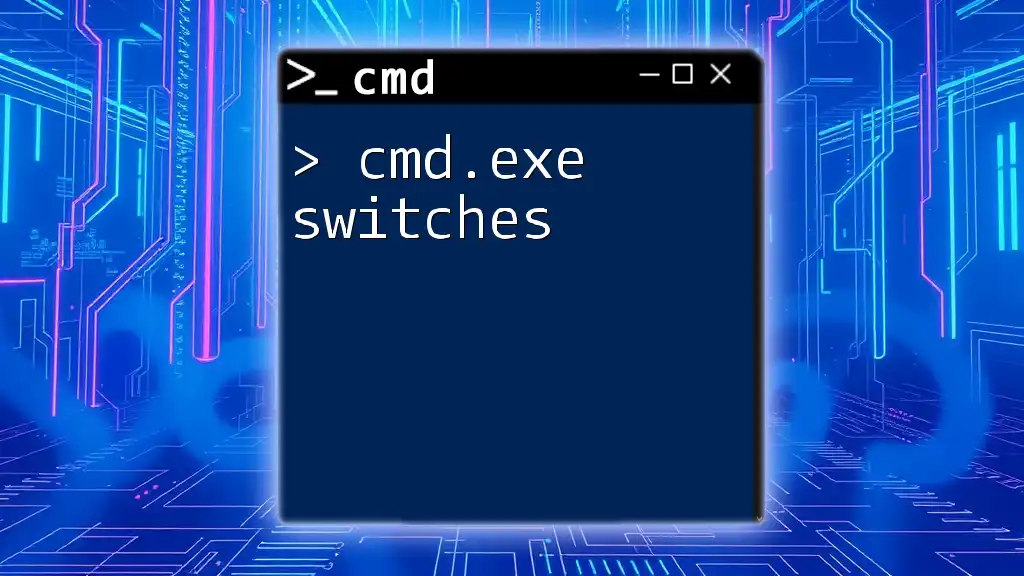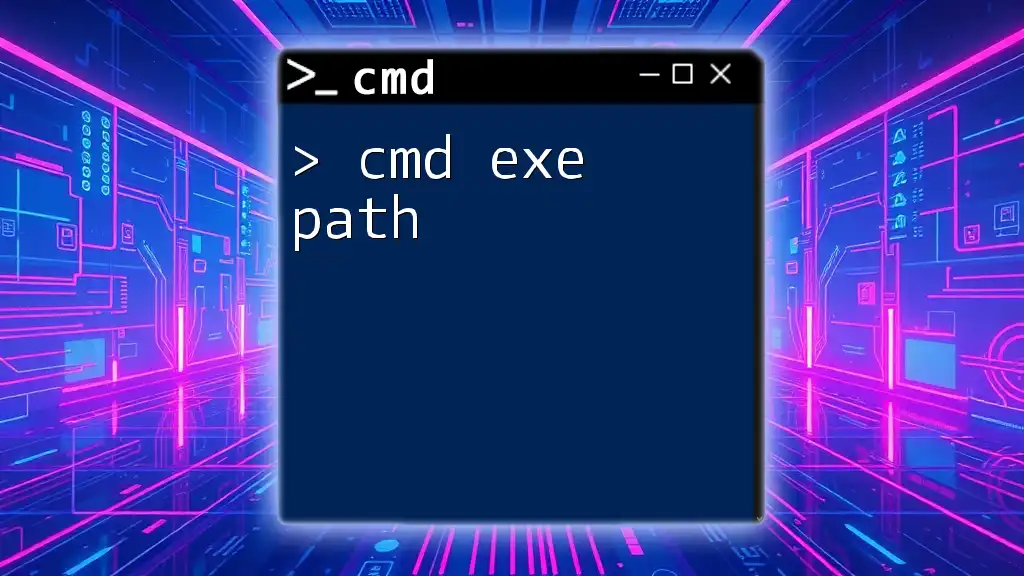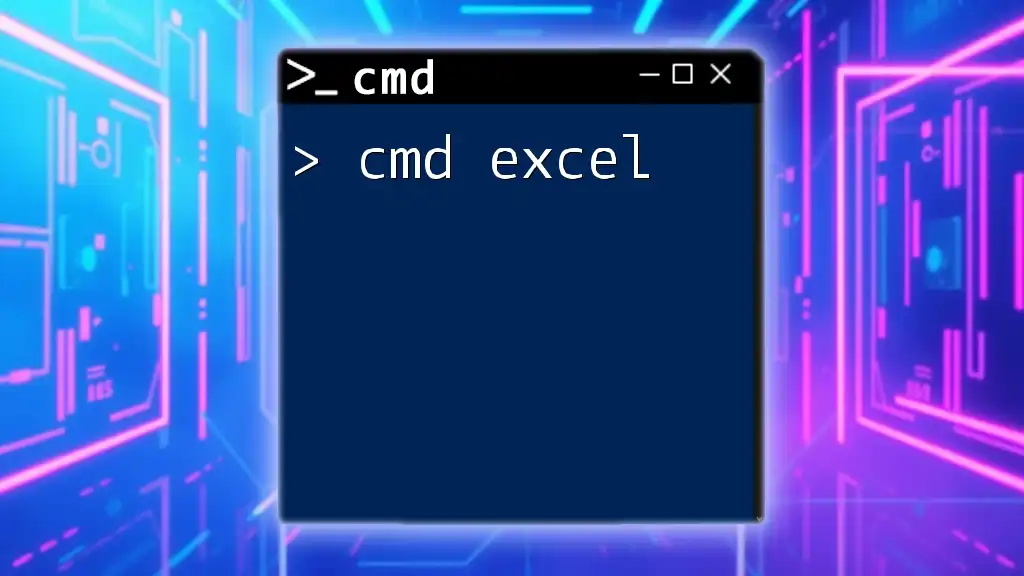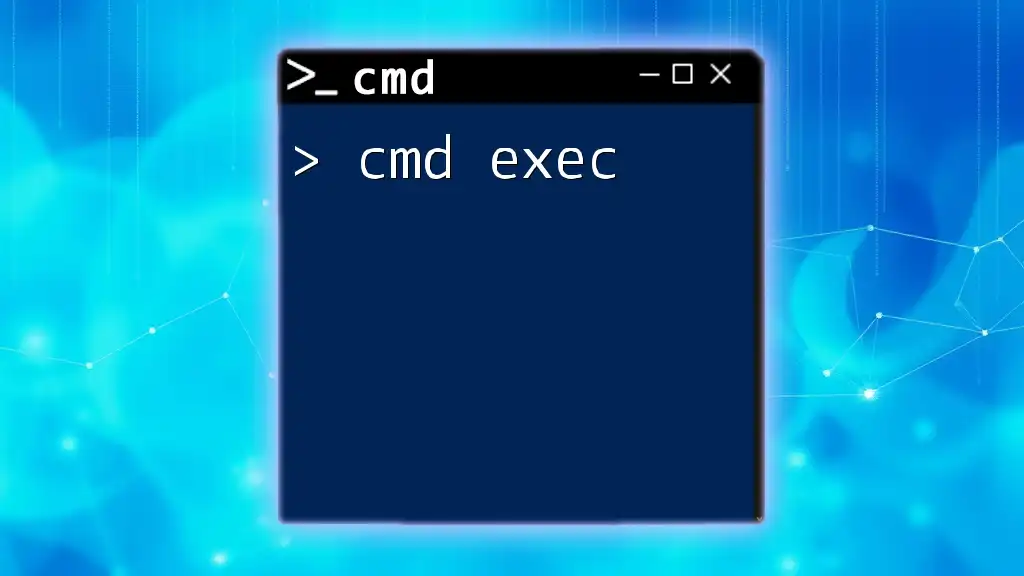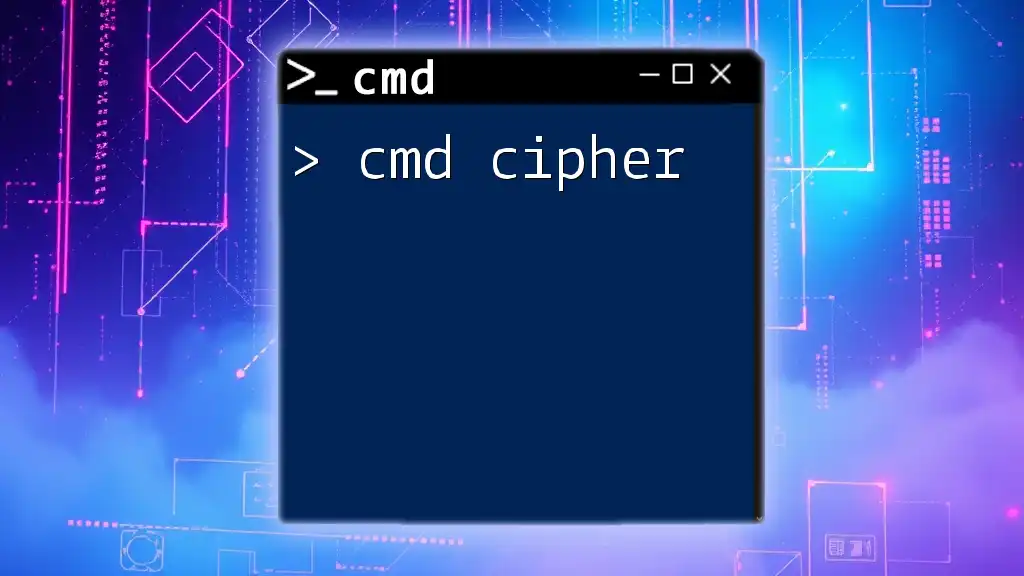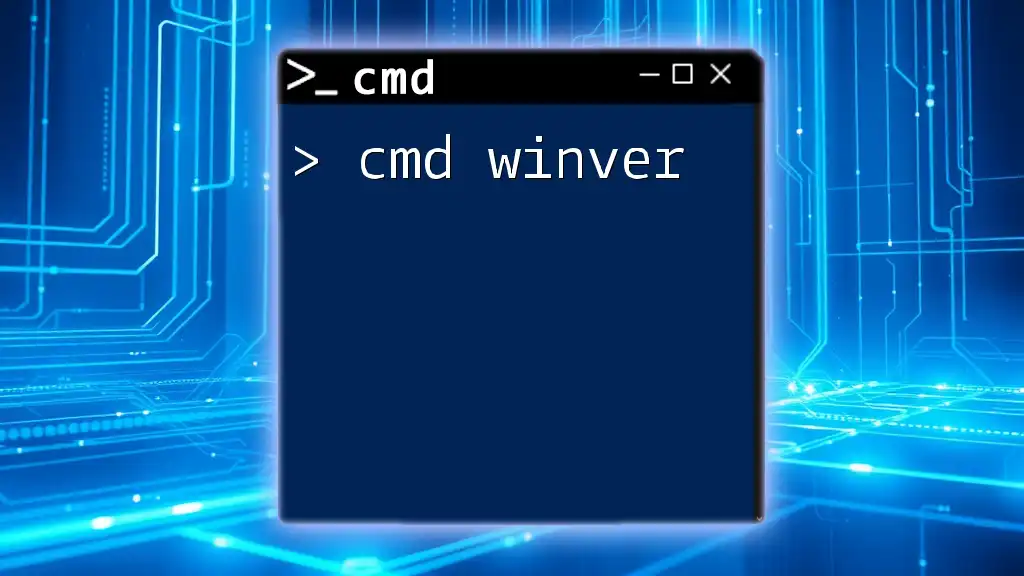Certainly! Cmd.exe switches are command-line options that modify the behavior of commands in the Windows Command Prompt, allowing users to execute tasks with greater precision and control.
Here's a basic example of using the `/C` switch with the `cmd` command:
cmd /C echo Hello, World!
Understanding cmd.exe and Its Importance
What is cmd.exe?
cmd.exe, or Command Prompt, is a command-line interpreter available in Windows operating systems. It serves as a powerful tool that allows users to execute various commands to perform tasks, manage system settings, and automate processes through scripting. Unlike graphical interfaces, cmd.exe provides a text-based interface, giving users the flexibility to execute complex commands efficiently.
Why Learn cmd.exe Commands?
Learning cmd.exe commands equips users with the expertise to navigate and manipulate their operating systems more effectively. This knowledge can streamline workflows, especially for IT professionals and power users who regularly perform system diagnostics, file management, and network configuration tasks. The command line can be significantly faster than clicking through graphical interfaces, making it an essential skill in today's tech-centric environment.
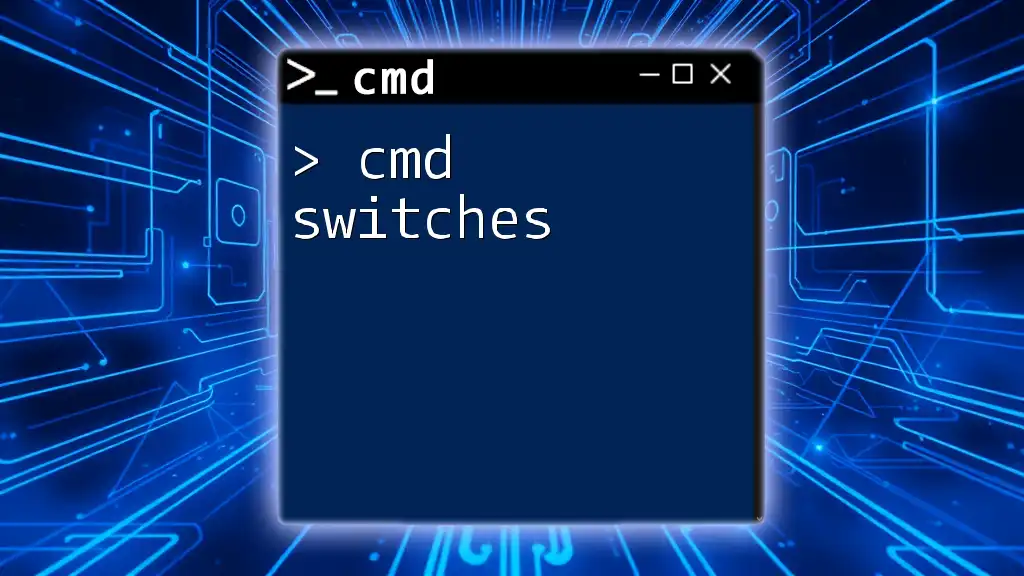
Introduction to cmd.exe Switches
What are cmd.exe Switches?
cmd.exe switches are additional parameters added to commands to modify their behavior or provide extra functionality. They allow users to customize how commands operate, changing the output or the command's execution context. Understanding how to utilize switches correctly is crucial for optimizing command-line operations.
How cmd.exe Switches Work
The syntax for using switches typically follows this structure:
command_name [switches] [arguments]
Switches can be indicated with either a single character following a "/" or a double dash "--". For instance, “/S” or “--system”. It’s essential to note that switches are generally not case-sensitive, but observing standard usage can help maintain consistency and avoiding confusion. Proper spacing is also crucial; switches must be placed immediately after the command, with a space separating them from any subsequent arguments.

Common cmd.exe Switches
The Basics of Common Switches
/S
The `/S` switch is primarily used in commands like COPY to remove spaces from the file names or paths in the copies made. For example:
COPY myfile.txt myfile_new.txt /S
This command will copy the file `myfile.txt` to `myfile_new.txt`, ignoring any spaces in the file names.
/C
The `/C` switch carries out the command specified and then terminates the command prompt. It is widely used because it allows you to execute commands without leaving the terminal open continuously. For instance:
cmd /C echo Hello, World!
This command will display “Hello, World!” in the terminal and then close it.
/K
In contrast to `/C`, the `/K` switch will execute the command and keep the command prompt open afterward. It is useful for viewing results before closing the command line. For example:
cmd /K dir
This command lists the directory contents and then remains open for further interaction.
Advanced cmd.exe Switches
/Q
The `/Q` switch enables quiet mode within certain commands, suppressing non-essential output. This can be particularly useful when automating tasks or running scripts. For instance:
del /Q myfile.txt
This command will delete `myfile.txt` without prompting for confirmation.
/F
The `/F` switch is usually associated with commands like FORMAT to enforce formatting options. For example:
format D: /F:32
This command formats drive D: with a FAT32 filesystem.
Miscellaneous Useful Switches
/Y
The `/Y` switch, used in commands such as COPY and XCOPY, automatically answers yes to prompts, allowing actions to proceed without confirmation:
xcopy C:\source D:\destination /Y
This command copies files from the source to the destination without asking for approval on file overwrite.
/R
The `/R` switch is often utilized with commands like DEL to remove read-only files without needing to change their attributes first:
del /R file.txt
This command deletes `file.txt` regardless of its read-only attributes.
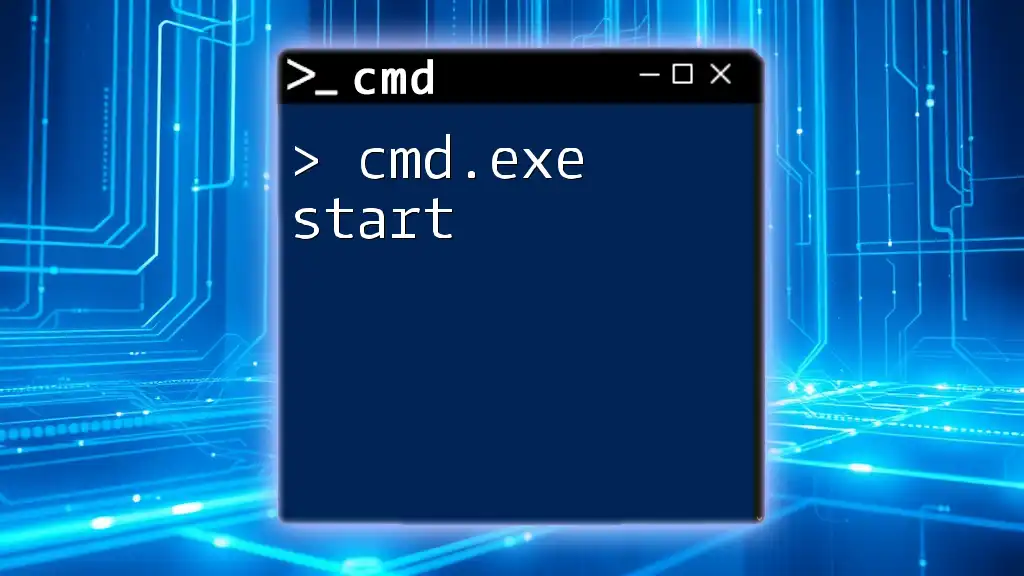
Special Cases and Unique Switches
Complex Command Structures
Combining Multiple Switches
One powerful aspect of `cmd.exe` is the ability to combine multiple switches for more complex functionality. For instance, you can combine `/S` and `/Q` in a single DEL command:
del /S /Q C:\folder\*.txt
This command removes all `.txt` files within `C:\folder` and its subdirectories without prompts.
Switches in Batch Files
Creating a Batch File with Switches
Batch files are scripts that allow users to execute a series of commands without repeatedly typing them in. When creating a batch file, switches can be incorporated to enhance the script's functionality:
@echo off
del /S /Q C:\temp\*.tmp
echo Temporary files deleted.
In this example, the script deletes temporary files from a directory and outputs a confirmation message.

Best Practices for Using cmd.exe Switches
Writing Clear and Concise Commands
When working with cmd.exe, clarity is crucial. Organizing commands effectively can minimize errors and confusion. Always ensure that commands are well-structured and easy to read, as this can significantly reduce troubleshooting time.
Testing Commands
Before executing potential disruptive commands, such as those that modify or delete files, testing in a controlled environment is paramount. Utilizing virtual machines or sandbox environments ensures that you can practice safely without risking critical data.
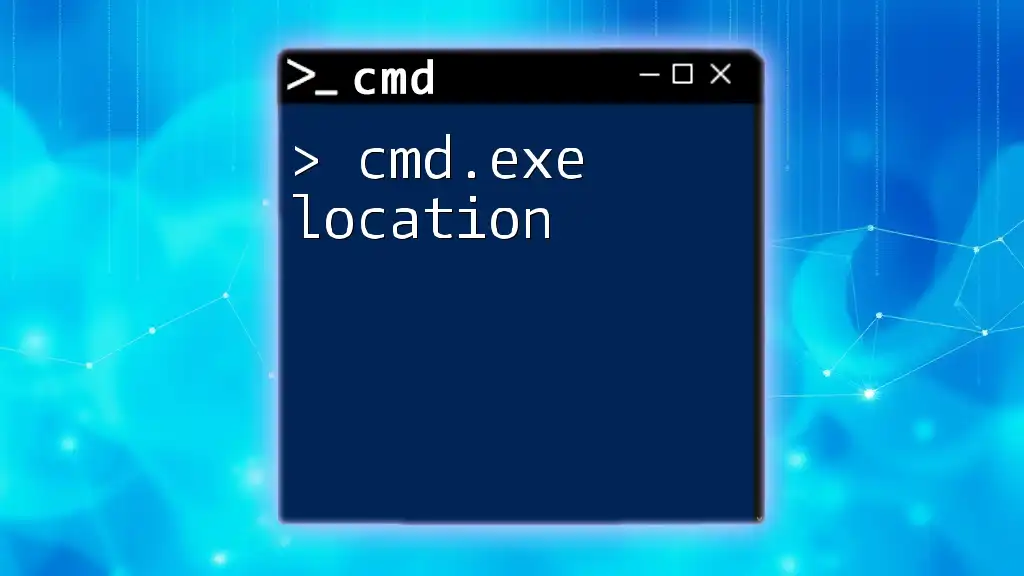
Troubleshooting Common Issues
Understanding Error Messages
When using cmd.exe switches, it’s common to encounter error messages. Understanding these errors can expedite problem resolution. For example, if a command fails due to a switch, the output may indicate an invalid argument, prompting users to check their syntax.
Debugging Commands with Switches
Debugging cmd.exe commands can often involve breaking down command structures to identify where an error originates. Utilizing the `PING` command or any simpler commands can help isolate issues and refine your command execution process.
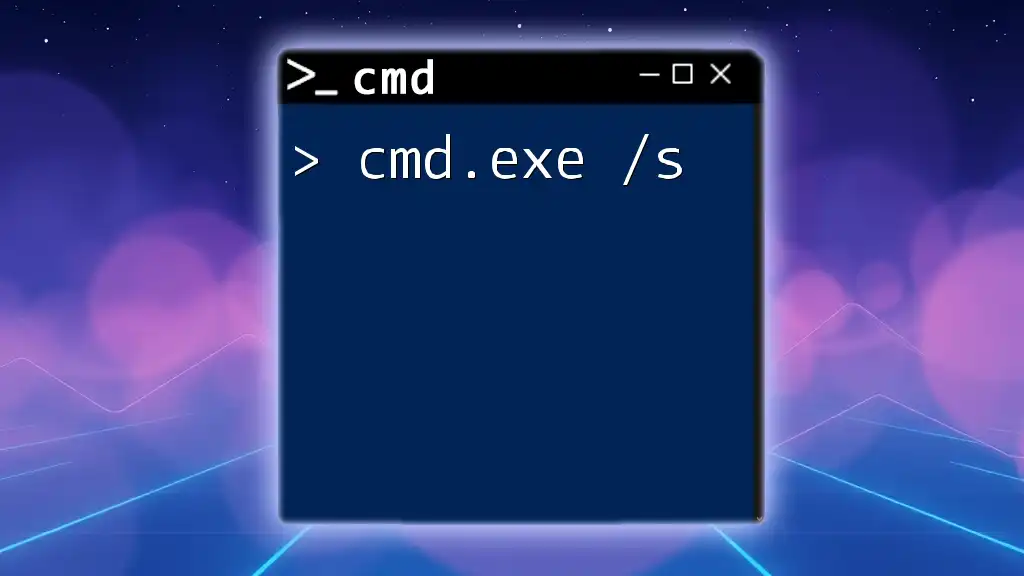
Conclusion
This guide provides a comprehensive overview of cmd.exe switches, enhancing your ability to navigate and utilize this fantastic tool effectively. By understanding and incorporating these switches into your daily tasks, you can significantly improve your productivity and command-line proficiency. Additionally, exploring further resources will deepen your knowledge and enhance your command-line skills even more.

